Today we are introducing a new brand identity for Survicate to better communicate what the product does. For most people, the old Survicate logo looked like ‘someone wearing a headset.’ And let’s be honest, a ‘headset’ has little to do with a customer experience platform.
Why has Survicate Rebranded?
You would not dress an 8-year-old child in the clothes of an infant. They won’t fit. Similarly, Survicate was wearing the same 'clothes' since it came to be in 2013 and meanwhile it outgrew them. But to grasp why a full rebranding was necessary, let’s go back to Survicate’s humble beginnings.

Need for Feedback
Survicate started out in 2013 as a survey software focused on solving one problem: getting feedback from website visitors. Marketing teams used surveys to improve the conversion rate on blogs, landing pages and websites.
Meanwhile, other teams got interested in the customer feedback that marketers were collecting. For example, product teams and customer success teams wanted to know how customers answered questions like: ‘What problem are you looking to solve with our service?
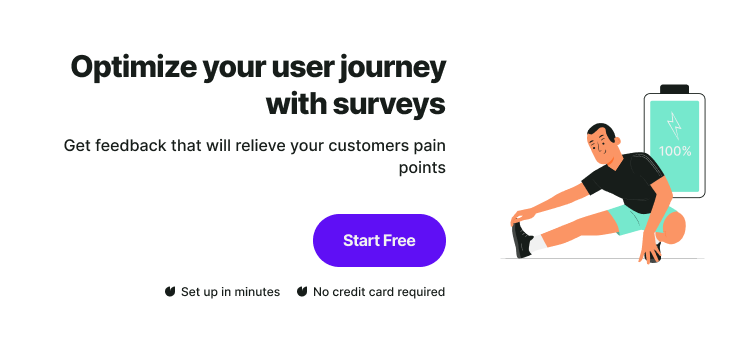
But product and customer success teams did not have access to the survey data that marketing was collecting. This was because product and customer success teams were NOT using a survey tool that was supporting only marketing use cases.

Mission: Break Down the Feedback Silo
From then on, Survicate’s mission became to break down the customer feedback silo by supporting use cases for other teams, not just marketing. In a customer-centric business, all teams should have access to all customer feedback because that allows them to work together towards a better customer experience.
If all teams collect customer feedback in one place with the same tool, then collaboration becomes easier.
Fast forward eight years to 2021.
Product teams use Survicate to get product feedback, do user research or find product-market fit. Customer success teams use it to measure customer satisfaction. Marketers use it to get feedback on newsletters, websites or segment audiences. Leadership teams use it to measure overall customer loyalty with Net Promoter Score. And so on.
Feedback is Best Shared
Once the teams collect customer feedback, they make that feedback visible across the business.
For example, they set up automated reports that reach everyone’s inboxes daily, weekly or monthly. Or they send customer feedback in real-time into a Slack channel. Or they use native integrations to send survey responses to tools like Intercom, HubSpot, Segment, Google Sheets, and 15 others. Or they integrate with Zapier which gives access to over 3000 apps.
To sum up, today, multiple teams in businesses of any size use Survicate to get customer feedback. Then they collaborate on the insights to continuously improve the customer experience and grow their market share.
Keep Survicate Easy-to-use or Else...
We added over 200 new features to Survicate over time. However, the platform did not become cluttered. To this day, Survicate customers describe the platform most often as ‘easy':
- Easy to set up
- Easy to send surveys
- Easy (and free!) to invite unlimited team members
- Easy to analyze survey data
- Easy to integrate with other tools
- Easy to share reports

You Don’t Have to be an Enterprise to Use Survicate
‘But wait - if Survicate does all that, then it must cost a fortune - is it for enterprises only?’
No, on the contrary. Survicate users are mainly scaleups and medium-sized businesses (up to 1,000 employees) who don’t want to deal with the hassles of using an enterprise customer experience platform.
Enterprise customer experience platforms take months to implement, need consultants to use and are overpriced - this is what their customers complain about the most in negative reviews on G2 and Capterra.
An agile business needs to get customer feedback now, not in 3 months. That’s why customers appreciate that Survicate is easy to use and no training is required.
How Much for Customer Feedback?
Well, you can’t buy customer feedback.
But you can get customer feedback with Survicate.
When it comes to pricing, Survicate's paid plans start at $53 a month.
Over 90% of customers self-serve so there is no need to talk to sales unless you want to. That’s because the pricing plans are described in detail on the Survicate website. Compare this to an enterprise-level solution, where you can’t find the pricing on their website.

The Pain of Buying Enterprise Ends Here
When you buy an enterprise solution, you need to fill out a form and then wait for a reply. A reply comes only after their sales team has qualified you and deemed you ‘worthy’ to use the product. Seriously, by the time you get a demo from them, you will have Survicate up and running - that’s because it takes less than 30 minutes to start with Survicate.
So you see, you don’t have to be a huge company to have access to cutting-edge tools for managing the customer experience. Survicate is here to level the playing field.
Small and medium businesses can use Survicate to improve their customer experience and win against competitors of any size: the bigger, the better.
A Collaborative Customer Experience Platform That’s Easy-to-use. For SMBs.
Survicate has evolved and continues to develop. First, it was a website survey software used mainly by marketers. Then, it became a collaborative customer experience platform used by any team for any use case related to customer feedback or customer experience. And above all, it retained its ease of use.
But despite a radical transformation at the product level, the branding never evolved. As a result, that old look doesn’t match what the product has become over the last eight years. That’s why today we are rebranding Survicate: to bring the brand up to date with what the product is now.
Why Focus on Customer Experience?
Short answer: in today’s world, the customer experience is the main competitive advantage a business has. How come?
Well, it used to be that companies competed on features. Product differentiation was the way to go up until the late 1990s. Back then, there were just a few competitors in a given market.
But today, there are tens, if not hundreds of competitors in every market. They all offer the same functionalities.
Look at the marketing technology lanscape for example. There are tens of email tools, tens of CRMs, hundreds of e-commerce tools and their number increases every year:
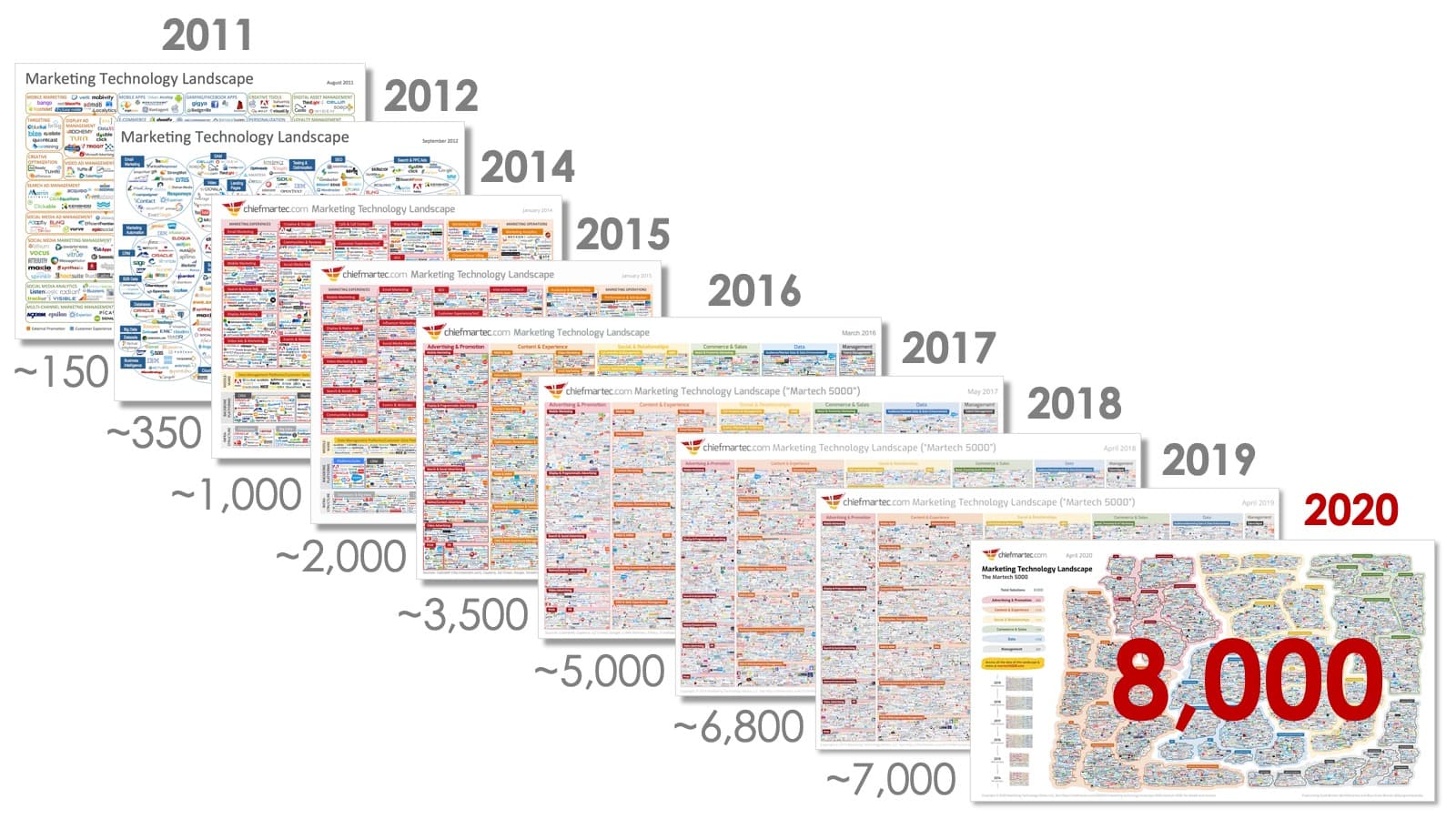
Win on Customer Experience
So how to win in this competitive environment?
You win by focusing on customer experience.
Jeff Bezos, Amazon’s CEO, said: ‘If there’s one reason we have done better than our peers in the Internet space over the last years, it is because we have focused like a laser on customer experience. And that really does matter, I think, in any business.’
You may like or dislike Jeff Bezos - but the fact remains: Amazon has been successful exactly because of the customer experience it delivered to its customers. And although Amazon is now a large company, this pricinple applies to any business of any size.
Build to Last, Build Brand
The best part about focusing on customer experience is that it’s an evergreen strategy. It works now and will work in the future. So it’s worth investing in because it will always pay off.
Finally, the customer experience grows the brand. It’s reputation. It’s what customers say about a company after they interact with the website, the product, the service or any other part of the business. And the brand is another timeless differentiator that competitors can’t copy.
Is Survicate Just Another Customer Experience Platform?
No, Survicate is not just another brick in the wall. And here’s why.
Traditional customer experience platforms are for very large companies with over 5000 employees. So small and medium businesses don’t have easy access to customer experience software.
Without customer experience tools, SMBs can’t compete in today’s hyper-competitive markets, where customer experience is the only way to win. So small and medium businesses are doomed to fail.
But that’s where Survicate comes in. Survicate is a customer experience platform that is for small and medium companies.
With Survicate a scaling business can start improving their customer experience within minutes and within budget, giving it a fighting chance in a crowded market.
What Brand Elements are Changing in Survicate?
The following branding elements are changing:
- The logo
- The colors
- The fonts
- The layout
- The illustration style
In other words, every brand element is changing, which makes this a complete rebrand.
Nothing else is changing except the elements listed above.

What Does the New Survicate Logo mean?
The new logo builds on a not-so-obvious element from the ‘old’ logo. How come?
If you look closely at the ‘old’ Survicate logo, you will notice that it resembles a meerkat. And what are meerkats known for? They are curious! And ‘curiosity’ is a crucial ingredient for a product that asks customers questions.
So, we took ‘curiosity’ from the old logo. We blended it with the two words that customers use most often to describe Survicate: ‘ease of use’ and ‘flexibility.’
Next, we made the new logo bold. That’s because you need to have courage and dare to ask questions - curiosity alone is not enough.
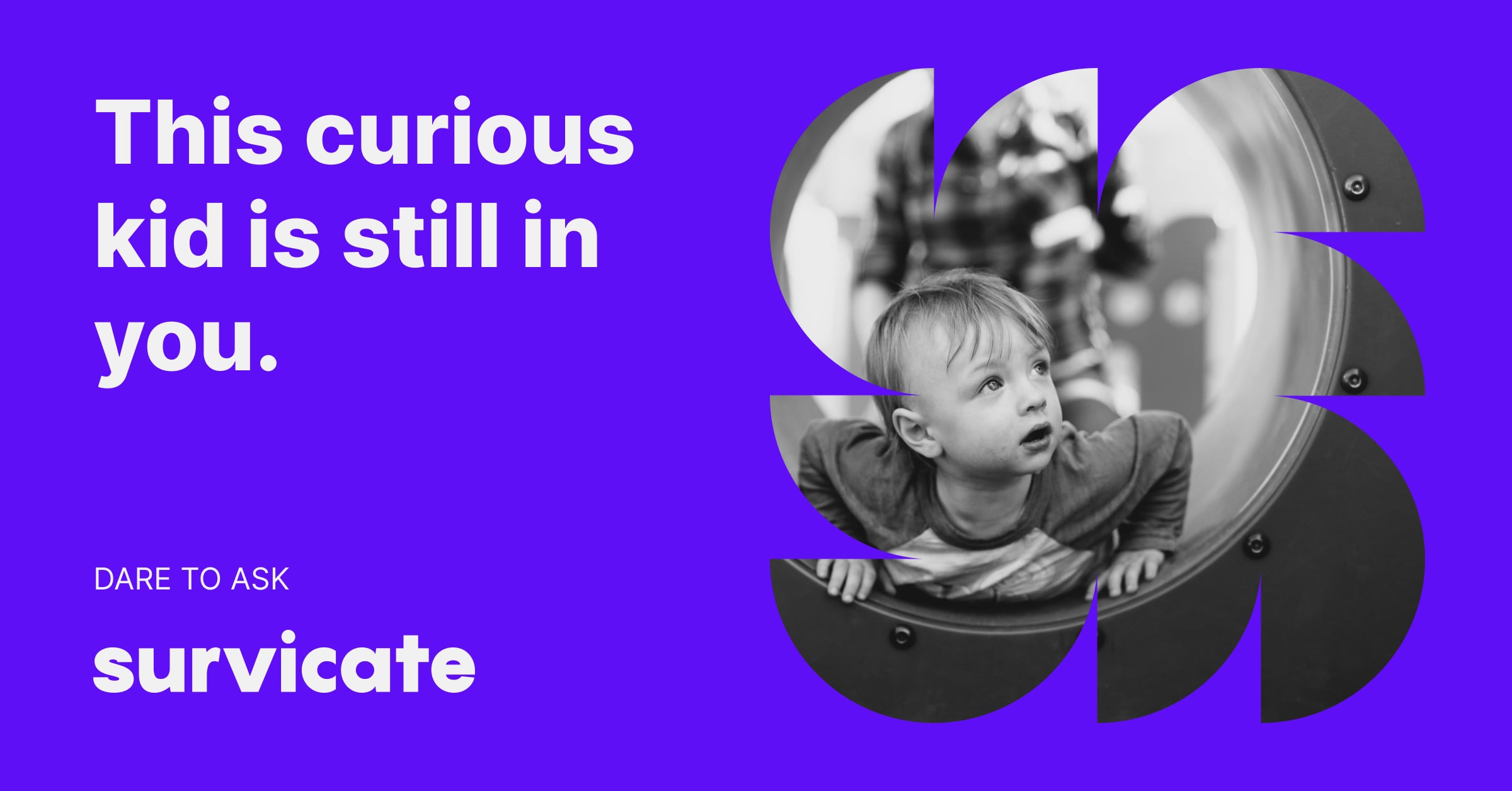
The result is visually reflected in the new Survicate logo:
- The star at the center of the logo represents customer feedback
- The shapes around ‘the star’ are teams collaborating on customer feedback. Teams work together to continuously improve the customer experience because that’s what makes or breaks a business
- The style of the logo indicates flexibility. The pattern in the logo can be easily re-shaped to serve a new role. In the same way, Survicate can adapt to any customer experience use case for any team

You can find a full description of the Survicate rebranding from a design perspective in this article.
What’s Next for the Survicate Rebrand?
The visual identity introduced today is a foundation that better communicates what the product does. We’ve rebranded some of the assets like our homepage, but some landing pages still rely on the old branding.
Moving forward, we will rebrand all our existing assets, including elements of the product itself. And of course, we will build any new asset using the new brand identity.

.webp)






.svg)
.svg)
.svg)

.svg)


.svg)







.svg)




.svg)

















.svg)






























.svg)

.svg)
.svg)

.svg)



.svg)





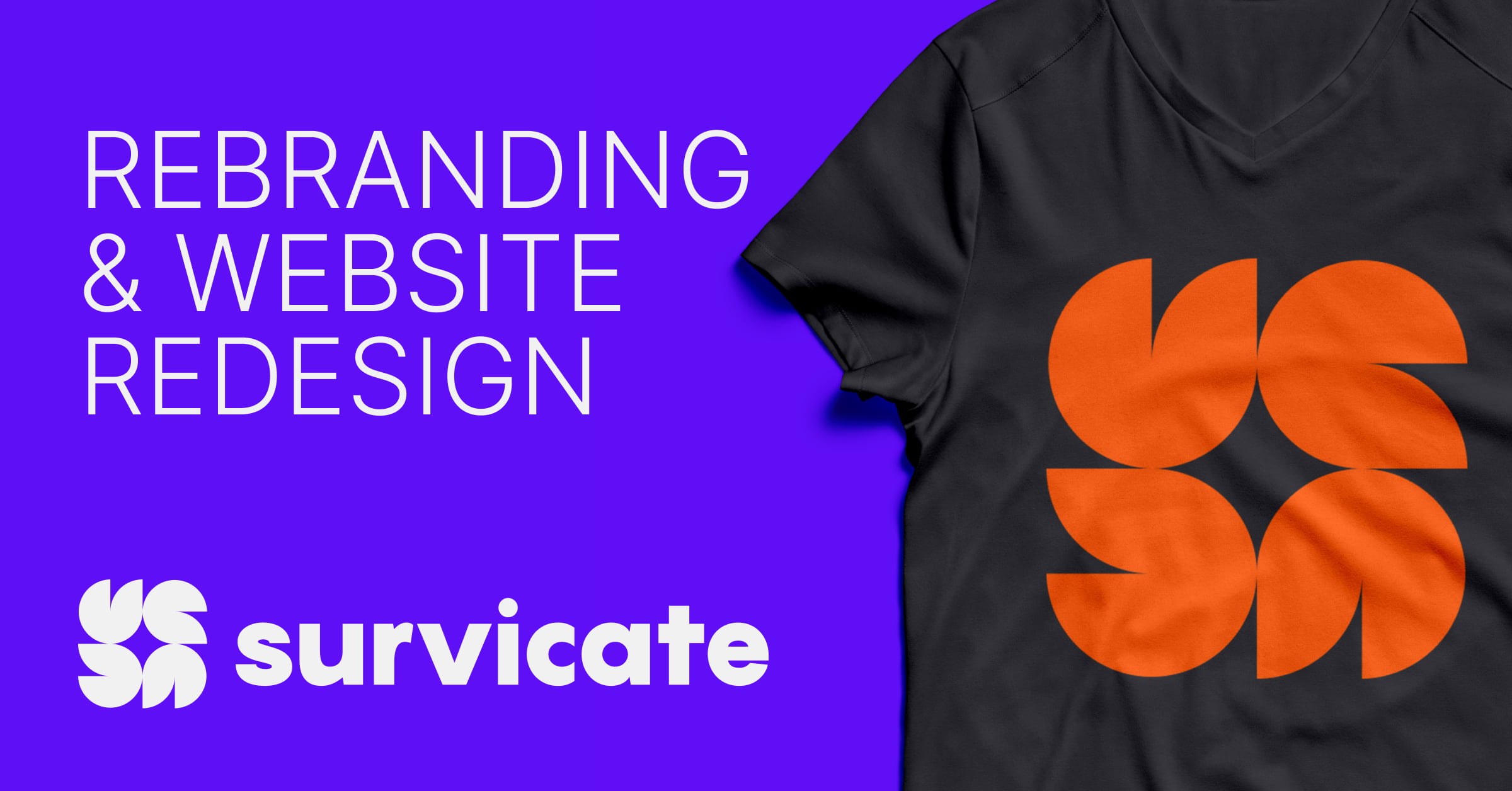

.svg)

.svg)
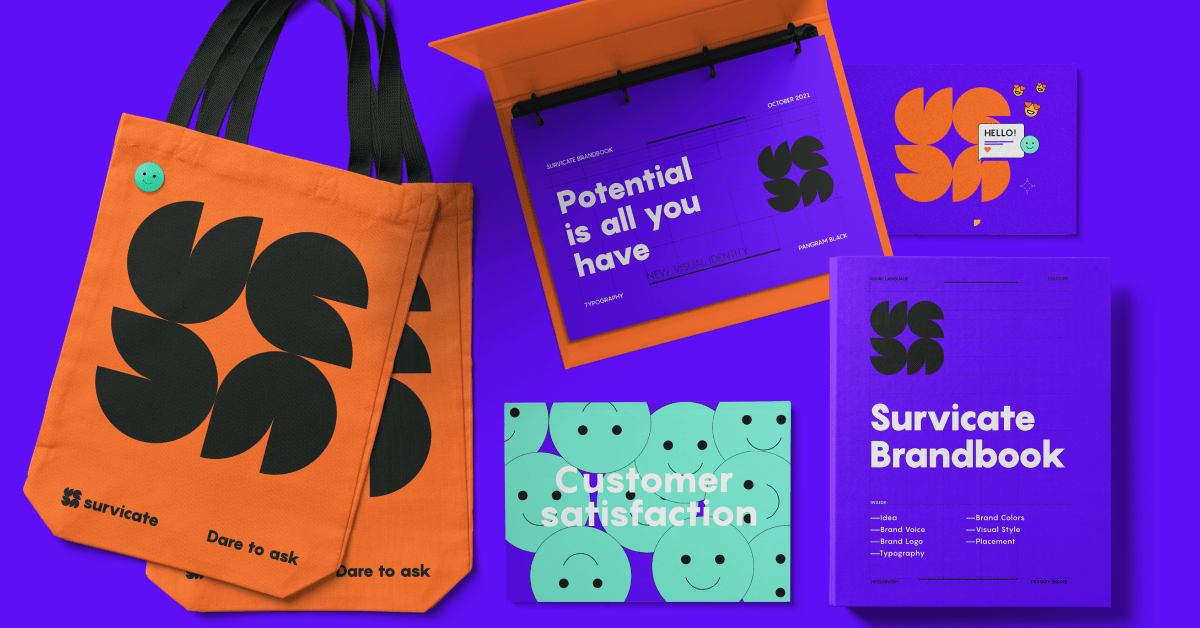
.jpg)



